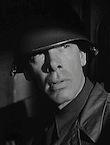My 'knockout punch' wasn't really aiming for the final blow, I was merely concerned about getting my CCA and followers off the map at the exit point in the time allotted. So, as much as I'd like to think it was all part of my plan to attack the enemy's supply depot, my main motivation was just to dash to the other side of the map

Sometimes (and sometimes not) dubious moves result in lucky hits - remember Peter Sellers in "The mouse that roared" getting the US to surrender by bringing an "egg" into New York? The bottom line is that your strategy worked. But it would be interesting to retry this battle with German reinforcements on.[X(]I have no idea where and in what strength those reinforcements come in, but they could make at least some plans go awry.As the scenario lies now, the Germans forces could hardly be put in a worse starting position (in addition to being outnumbered), and if anyone is able to pull off a win with the Germans with this scenario without reinforcements, I would be interested in seeing how they did it.
I'm not massively au fait with all things wargaming, but I am very curious, and have a keen interest in military history from all eras (just a bad memory for precise details it seems).. so please forgive my ignorance on some topics.. I have a couple of queries from this outcome..
If you think YOUR memory is poor...[:'(]
a) I thought moving my CCA supply forward would make getting the supplies to the troops on the front more likely and more quickly. Is this a tactic that would have been used in the conflict, or were supply depots not that mobile as such?
There are usually two base units responsible for supply distribution, but it is unclear to me how the game models supply distribution to the base unit. In real life, supply sources were kept well back of the battle,but had to be close enough to get the supplies to the front (in the game there are invisible supply truck units doing this). I don't know if the base unit gets fewer supplies if it is further from a map edge. I DO know that if this unit is overrun by enemy units, the owner is up the creek without a paddle unless he is saved by the scenario ending.I usually take no chances and leave the supply unit where it is near the map edge.
b) Also, to maintain control of an objective, I sometimes peel off units to hold a presence in the area, is this how it should be done, or even how it was historically? I sometimes feel its a bit "Capture the Flag" and "Gamey", and I have no real logic determining which units to use as these placeholders.
Leaving an objective undefended is an invitation to the enemy to take it. If it is a critical objective (for instance it is essential to maintain your supply line) then it is important not only to hold it, but to keep the line open. Note that you need to have more than 10 times the enemy strength in the objective area to get the points.
Note that no one forces you to go for the objectives defined by the scenario designer. Objectives are necessary for the AI at this stage of wargame design, but if you are more concerned with having fun that "winning", you can forego objectives that you disagree with in the broader context and play the scenario YOUR way. For example, in this scenario, I decided that the objective at Beffe was immaterial to my realizing the "historical" objective of linking up with Patton, so I decided to leave the units there bottled up for a later "cleanup" by infantry after the end of the scenario.
As for which unit to leave, it depends on whether or not you expect the enemy to attack it and where it is localized. You can occupy it with a HQ unit or artillery only if you do not expect it to be attacked by more than the HQ can handle, you can occupy it with an AT unit if you expect enemy tanks, or infantry if it is in woods; ideally you would like a combined force (infantry and armor-and why not artillery), but the units left there will not be available elsewhere. It is often a good ideal to occupy it temporarily with a unit (say a battalion) that needs to rest, and to replace it with a HQ unit and one or two of its support units later.Also it obviously depends on whether you are moving forward or retreating...
c) I hear a fair bit about manoeuvre warfare, and I presume its about shifting your troops into advantageous positions, but what are the alternatives? Attrition, going head to head or combined Arms stuff? I like to think the way I'm tackling it is 'offbeat' but I'm not entirely sure I'd know what wasn't offbeat - if anyone could highlight the various approaches to this sort of conflict, I'd be much appreciative.
Maneuver warfare is an approach to war first put forward by Sun Tzu, and developed after WW1 by Liddell Hart, DeGaulle, Guderian and others, and used by the Germans for use in WW2, and is the present fighting doctrine of the US Marines. One of its tenets is to be able to act faster than the enemy is able to react (the so-called Boyd cycle), so that the enemy can be neutralized by preventing him to act effectively. The classical example is the German Blitzkrieg in Poland and France, where fast-moving tanks break through enemy lines to disrupt enemy rear areas, preventing HQs and supply units to do their jobs, which prevents front-line units from dfighting effectively . The best exposition and most fun to read book on the subject is Liddell-Hart's book "Strategy", the modern version of which has been expanded to contain examples from the 1967 Arab-Israeli War.
The alternative is the Theory of Clausewitz, an 19th (18th?) century German theorician who put forward the theory that the way to win is concentration of force.A good folower of Clausewitz was the Union General (I forgot his name - there goes the memory again) who coined the phrase "Get there fustest with the mostest!"
Most wargames leave little room for maneuver and allow instant reactions, and therefore allow only Clauzewitzian warfare.
Henri











